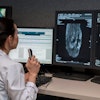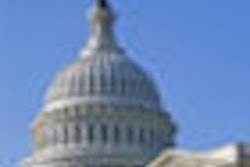Legislation has been introduced into the U.S. House of Representatives that would close a loophole in federal law that enables physicians to self-refer patients for imaging studies as long as the exams are performed in their own offices.
The so-called Stark law in-office loophole has long vexed radiology advocates who see it as a way for nonradiologist physicians to skirt the law's provisions banning physicians from referring patients to entities in which they have a financial interest. Imaging proponents believe physician self-referral is driving higher imaging utilization and, thus, higher healthcare costs.
But the Stark law loophole would be closed under legislation introduced by Rep. Jackie Speier (D-CA), whose Integrity in Medicare Advanced Diagnostic Imaging Act of 2009 (HR 2962) would amend Title XVIII of the Social Security Act to exclude certain advanced diagnostic imaging services from the in-office ancillary services exception to the Stark laws.
The laws would ban in-office self-referral of modalities such as MRI, CT, and PET, but would not cover x-ray, ultrasound, and fluoroscopy studies. It would also not cover imaging services performed for the purposes of radiation therapy treatment planning or in conjunction with an interventional radiology procedure. In addition, it would not cover nuclear medicine exams apart from PET.
The bill currently has no co-sponsors. It has been referred to both the House Energy and Commerce Committee and the House Ways and Means Committee.
The American College of Radiology (ACR) lauded Speier's action, pointing out that Government Accountability Office (GAO) reports and peer-reviewed studies published in the Journal of the American Medical Association and elsewhere have shown that when physicians refer patients to facilities in which they have a financial interest, imaging utilization is significantly increased, the ACR said.
"ACR has long sought to have this loophole closed, and we're pleased Rep. Speier has introduced the legislation," said Josh Cooper, senior director of government relations at the Reston, VA, society. "We're going to start trying to build support for the bill, hopefully gather some co-sponsors, and work to incorporate it into the ongoing healthcare reform that's happening now."
Other reactions were more cautious. Introducing a bill is one thing -- seeing it successfully passed is another, according to Dr. Leonard Berlin, chair of radiology at Rush North Shore Medical Center in Skokie, IL.
"There's no doubt the Stark law loophole is a problem," Berlin said. "And it's great that Rep. Speier introduced the legislation. But it's a long process from submitting a bill to getting it passed and signed by the president."
Speier's bill is a start toward ending physician self-referral, Cooper said: With the in-office self-referral loophole, nonradiologist physicians have control of patients. Not only is the value radiologists offer as imaging experts minimized, but self-referral puts a financial burden on Medicare as imaging utilization rises.
"This legislation will be good not only for patients, but also for the Medicare system," Cooper said. "There are some folks out there abusing Stark."
Related Reading
MedPAC: Self-referring docs use more imaging, June 23, 2009
Senate report offers details on accreditation, Stark disclosure, May 6, 2009
The Profit Center: Part 2 -- Steering clear of Stark and false-claims violations, March 31, 2009
Tucson cardiologists settle Stark law case, March 20, 2009
Imaging self-referral: An inside manifesto, March 19, 2009
Copyright © 2009 AuntMinnie.com




















